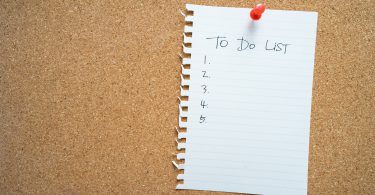By Ethan Guevin
Two weeks ago, we published Planning Your Fall/Winter Off-Season, an article jam-packed with important information on how to maximize your off-season so you can return in peak form in the spring. If you didn’t get a chance to read that article and the resources in it, make sure you have a look. This week, we add to those resources by addressing the most important part of returning ready for the season– you guessed it– THROWING! We encourage pitchers AND position players to have a planned throwing program to make sure they are ready for the season.
DISCLAIMER:
Arm care and arm health are far too important not to address in depth. Below we outline a general throwing program to get high school players prepared for the spring season. The throwing program is a GENERAL GUIDE aimed at helping HEALTHY PLAYERS who are coming off a prolonged period of rest from throwing.
We do not know the details about any individual player’s health, schedule, timeline, rest, or requirements for the season. As such, it is ALWAYS BEST FOR YOU (or any player) TO MEET WITH YOUR COACHES and have them help you come up with a plan tailored to your schedule and specific needs. Seek professional advice before starting any throwing program and see your doctor if you are experiencing pain.
STEP 1: Figuring out Day One
Figure out the first day you need to be ready to throw at 100%. For pitchers, this may be your first scheduled bullpen. For position players, maybe tryouts or the first scheduled practice. Moving forward, we will refer to this day as Day One.
STEP 2: Figuring out Throwing Program Start Date
Count backwards from Day One 6-8 weeks. This new date should be the date you start your throwing program. Starting 6-8 weeks before Day One may seem early, but you will do your arm a huge service by starting slow and giving it the time it needs to get ready without rushing. Six weeks can be enough, but 8 is best, especially if you play a position that is demanding on the arm.
STEP 3: Understanding the Expectations of Day One
Your throwing program should be a progression, starting out nice and easy and increasing in intensity up to Day One. This is where the discussion with your coach will be extremely helpful. What are the expectations on Day One? Do you need to be ready to throw in a game? How many pitches or throws will you be expected to make? If you are a pitcher, will you need to be ready to throw off-speed pitches? Or just fastballs? The more game-like you will have to be on Day One, the more important your increasing intensity becomes.
STEP 4: The Progression
There are some great resources out there on throwing and throwing progressions. Alan Jaeger just came out with his Year Round Throwing Manual that looks at throwing throughout the year and would be a great read for the serious baseball players. Most baseball coaches generally agree that a 6-8 week throwing program/progression will break down as follows:
Important: Throwing should be done only following proper warm-up and stretching (Band work and shoulder care are also suggested).
Week 1:
Frequency: 3X/Week (Every Other Day)
Aim: Get the arm moving and stretched out. Light catch to approx 90 feet. No hard throwing. Low intensity.
Week 2:
Frequency: 4X/Week
Aim: Start to work back a little bit farther each day. Still not throwing hard.
Week 3:
Frequency: 5X/Week
Aim: Now that your arm is starting to feel stronger, start working in some long toss. Picking up the intensity throughout the week.
Week 4:
Frequency: 5X/Week
Aim: Continue to long toss with a focus on building arm strength. You should be throwing with increasing intensity as your arm gets stronger.
Week 5:
Frequency: 5-6X/Week
Aim: Your arm should be feeling pretty good now. Continue to build intensity and distance in your long toss. If you have had no set backs and your arm is feeling strong, start to incorporate light position specific throwing.
Pitchers, if you are feeling strong and have had no set-backs, start to incorporate fastball only flat ground/short-box* after throwing 2-3X/week. Do this on days when you are feeling good.
Week 6:
Frequency: 5-6X/Week
Aim: Continue to build on intensity and distance in your long toss. If you have had no set backs and your arm is feeling strong, continue to incorporate more position specific throwing.
Pitchers, if you are feeling strong and have had no set-backs, continue to incorporate flat ground/short-box after throwing whenever you feel good. Start to mix in your change-up with your fastball in your flat ground/short-box.
Week 7:
Frequency: 5-6X/Week
Aim: Continue to build on intensity and distance in your long toss. If you have had no set backs and your arm is feeling strong, continue to incorporate more position specific throwing.
Pitchers, if you are feeling strong and have had no set-backs, continue to incorporate flat ground/short-box after throwing whenever you feel good. Start to mix in all your secondary pitches with your fastball in your flat ground/short-box.
Start to incorporate bullpens into your weekly throwing. Allow for proper time between bullpens. 2 bullpens in first week, at most. First bullpen should be 10-15 fastballs at a comfortable intensity. Second bullpen should 10-20 fastballs, increasing intensity at your comfort. Let your body and arm dictate intensity and number of pitches.
Week 8:
Repeat week 7.
Pitchers, if you are feeling strong and have had no set-backs, continue to increase pitch intensity and number of pitches in the bullpen. Consult with your coach on bullpen details. The details/requirements of Day One will be helpful in determining how quickly you increase the intensity in the bullpen.
Assuming your arm is healthy and you’ve experienced no set-backs, with 8 weeks of general throwing and 4 weeks of increasing position specific throwing, you should be ready to go at 100% on Day One.
Additional Notes:
-Take days off when needed, but try to work through general/expected soreness even if you have to do it with a lighter throwing day. Check with your coach, doctor or athletic trainer if you have any doubt if you should throw or take a day off.
-Let your body and arm dictate intensity daily. This is especially true Weeks 4-8. Feeling sore? Back off for the day. Feeling really good? Extend or get extra throws. If you have questions about soreness/pain, seek advice from your coach, doctor and/or athletic trainer
-Always throw with a purpose. For more information about how to play catch the right way, click here. Check out our position-specific advice here.
*”Flat ground/short box” refers to when you work on your delivery and pitches to a partner who is squatting in a catcher position. This is done on flat ground, not a mound, but allows you to work on pitching-specific things.







